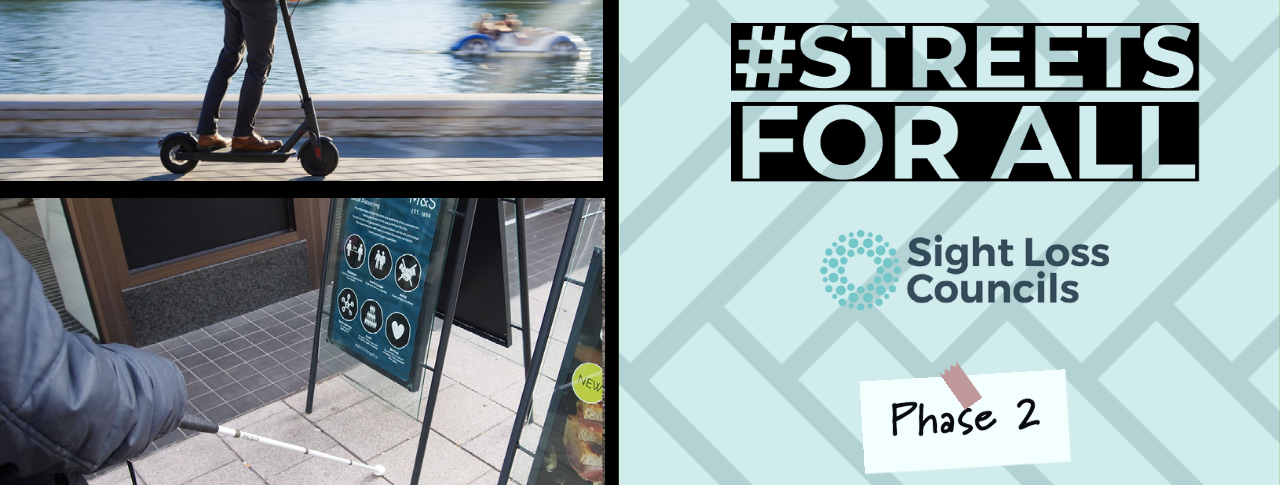Inaccessible street designs endangering blind pedestrians
Inaccessible street designs, rushed through by local authorities as a result of Covid-19, are threatening the safety and independence of blind and partially sighted pedestrians according to Sight Loss Councils.
Many local authorities are re-designing their streets to accommodate more pedestrians and cyclists and promote social distancing measures. However these one-way systems, temporary cycle lanes and increased use of outdoor seating areas can act as physical barriers to blind and partially sighted pedestrians.
Sight Loss Councils, which advocate for blind and partially sighted people in the UK, has launched the second phase of its #StreetsForAll campaign, calling on local authorities to consult with blind and partially sighted pedestrians before implementing new street designs. The first phase of the campaign highlighted the dangers of fast and silent e-scooters.
Mike Bell, Senior Public Affairs and Campaigns Manager for Sight Loss Councils said: “We welcome plans to open up more of our streets to pedestrians, but it is vital that any proposed changes are inclusive and reflect the needs of disabled and visually impaired pedestrians.
“Currently, a lot of these new designs are being rushed through with little consultation and the changes are not being communicated in accessible formats. This is causing a lot of anxiety and many of the visually impaired people we speak to are telling us all these new changes have knocked back their confidence when travelling independently.”
Michael Spriggs is a Merseyside Sight Loss Council member and has the eye condition Stargardts disease. When the first Lockdown was lifted and Michael went out shopping in town, he realised the streets he knew so well had changed. He said: “Restaurants had set-up marquees on the pavements for people to eat outdoors and shops were selling their wares on the pavements. The council didn’t tell us about these changes, which meant I wasn’t prepared. I frequently walked into new obstacles.”
Sight Loss Councils are asking local councils to commit to three pledges to ensure changes are safe for pedestrians like Michael.
The pledges ask local councils to:
- Seek guidance from sight loss organisations and blind and partially sighted people on highways schemes at the design stage.
- Communicate changes on highways schemes in an accessible way to make sure that blind and partially sighted people can understand the implications of alterations in their neighbourhoods.
- Carry out Equality Impact Assessments on highways schemes to evaluate whether the proposed changes are safe and appropriate for disabled pedestrians.
- Sight Loss Councils are further encouraging local authorities to follow guidance developed by Thomas Pocklington Trust, Guide Dogs, RNIB and Visionary.
Sight Loss Councils, funded by Thomas Pocklington Trust, and led by blind and partially sighted people, work closely with businesses, charities, transport hubs, local politicians, and other service providers to improve access to services for visually impaired people at a local and national level.
Find out more about the #StreetsForAll Campaign
Publication date: 21 January 2021

